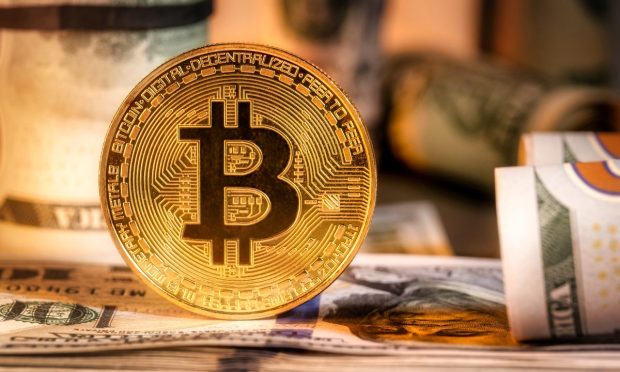Bitcoin’s Future as a Payments Tool Is Bright, Says BitPay CEO

It’s no surprise that Stephen Pair, CEO of crypto payments processor BitPay, thinks that as bitcoin ownership becomes more common, more and more people will be inclined to use it for its original purpose: making payments.
That’s not a particularly widely shared view right now, especially with bitcoin’s wild volatility on display since the November crash, which wiped out almost half of its value at the bottom.
“I think a lot of people will use it as a payment mechanism,” Pair told PYMNTS’ Karen Webster recently, adding that current users tend to be price sensitive. “When the price is down, they tend to not spend it. When the price is higher than they do spend it. And the same is true of the other volatile cryptocurrencies.”
See also: BitPay Sees Consumer Crypto Payments Growing Beyond Bitcoin
While BitPay’s prime product is bitcoin payments — either sent directly or via its Mastercard-issued crypto debit card — the company also supports No. 2 cryptocurrency ether, five stablecoins and several smaller altcoins.
Keeping Prices Stable
Pair said that one way many people can work around the tendency to only spend when prices are favorable is to effectively hedge their spending-focused bitcoin with stablecoins. Stablecoins maintain a one-to-one peg to the the U.S. dollar by backing it with a reserve of either fiat currency or — in theory — highly liquid assets like treasuries.
“We’re thinking of ways that we can alleviate that and allow people to transact, even when the price of bitcoin is low,” he said. “One of those is stablecoins. Instead of making their purchase in bitcoin natively, when the price is high, they’ll convert into stablecoins.”
That way, Pair said, they can make their purchases using stablecoins that have locked in a favorable bitcoin price.
“I think our 30-day moving average was somewhere in the neighborhood of 15% of our volume” was in stablecoins, he said. To encourage that hedging dynamic, the company is also considering offering the ability to initiate a point-of-sale loan.
If you want to make a purchase but the price is down, he said, “instead of actually selling your bitcoin, you could just use it as collateral for a loan if you think the price is going back up.”
Then, you pay that loan back by selling some bitcoin after it goes up. Pair said that’s something BitPay would likely use a partner to handle, adding that the idea is still at an early stage.
If decentralized finance (DeFi) is anything to go by, the loans would need substantial collateral beyond the amount borrowed — 125% to 150% is common.
Some of BitPay’s business-to-business (B2B) clients turn the bitcoin balances into stablecoins, letting them accept payment from customers and make them to vendors without keeping their bitcoins on the balance sheet, which can require them to account for gains or losses while it’s there. Additionally, BitPay recommends that most businesses do their payments in whatever currency their accounting system is in.
“Conducting your day-to-day payments, it’s much simpler if you’re doing it in the currency of your accounting system,” Pair said.
Whose Stablecoin?
That, of course, leads to the subject of private stablecoins versus government-issued stablecoins — better known as central bank digital currencies (CBDCs).
That’s been a hot topic recently with the House and Senate holding hearings on how best to regulate them in the wake of an administration proposal to only allow federally-insured banks to issue stablecoins.
Related: House Committee Voices Concerns Over Stablecoin’s Effect on Dollar
“I think the federal reserves should just let the private industry issue stablecoins and not be in such a rush to do it themselves,” Pair said.
There are potential benefits, he said, noting that with a CBDC, or digital dollar, there is no counterparty risk, which you do get with stablecoin issuers and banks. The latter may not seem like much of a concern at the moment, he said, pointing to the sub-prime mortgage financial crisis.
“I remember 2008 or 2009 and wondering, ‘Are my bank accounts safe?’” Pair said. “In 2008, had there been a digital dollar, I would’ve had all of my dollars in my [digital] wallet. I would not have had them in a bank [or] anywhere near a bank.”
As for bitcoin, Pair acknowledged that there has been a lot of discussion about whether it is an inflation hedge, as supporters have been saying for a year or so, or a risk asset.
“At least in the short term, it trades like a risk asset,” Pair said. “If the stock market goes up and down, bitcoin’s kind of going up and down [with] it.”
In the longer term, he added, bitcoin is not pegged like a stablecoin and it’s not an equity.
“It’s fundamentally very different and it will trade differently,” Pair said. “I think you’re basically speculating that bitcoin will continue to do well as a store value and hold its value, and that the protocols work and the blockchain is secure. If all those things are true, it should continue to perform like it has.”
Which, over the long-term and even over that last year, is very well. Back at about $45,000, bitcoin is still up 50% from where it started 2021.